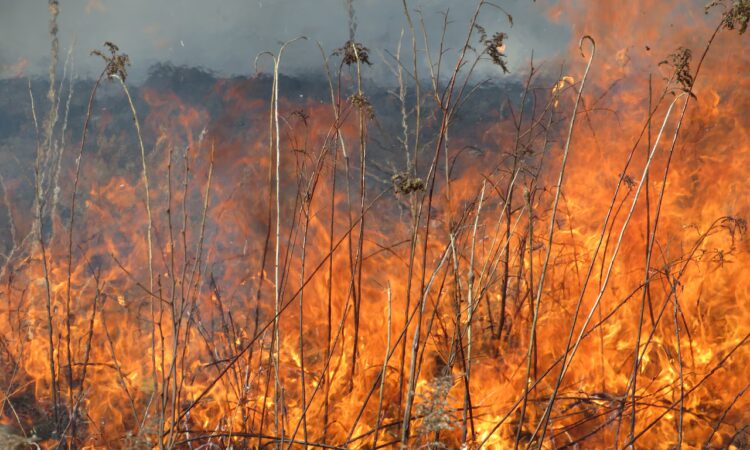
JACKSON, MI — Michigan’s second largest electric utility will de-energize lines and temporarily shut off power to prevent destructive wildfires from igniting.
Consumers Energy describes the new strategy, announced on Tuesday, Oct. 28, as a “last resort” to be triggered only during severe weather or extreme conditions creating a high risk for fire.
Utilities’ use of the tactic, called a “public safety power shutoff,” is expanding beyond western states with a track record of catastrophic wildfires, researchers say.
It comes as drier vegetation and hotter weather caused by climate change increase the potential for more intense blazes threatening homes and lives.
“We recognize that losing power is disruptive, and we are committed to using this measure only if it is necessary,” said Greg Salisbury, senior vice president and president of electric distribution for Consumers, which provides power to 1.9 million customers.
“We are committed to providing timely communication and support to our customers before, during and after a shutoff, if these extreme conditions occur,” he said in a statement.
Fallen lines, or power equipment that comes into contact with brush or trees can provide the spark that unleashes a wildfire.
High-profile examples can be found in some of California’s most destructive fires, but incidents are cropping up in other states. Last year’s Smokehouse Creek fire, which consumed a million acres and broke records in Texas, stemmed from a broken utility pole.
In Michigan, most wildfires are much smaller.
Just under 1,000 acres have burned so far in 2025 across 310 fires, a slightly higher total than the recent historical average, according to Michigan Department of Natural Resources statistics.
Fire has consumed about 21,300 acres over the past decade in Michigan, the figures show.
Read more: Fighting wildfire with fire: Can Michigan burn its way to healthier forests?
That includes a handful of larger blazes. The 2023 Wilderness Trail Fire near Grayling consumed more than 2,000 acres and sparked evacuations. In 2010, the Meridian Boundary Fire destroyed a dozen homes and threatened the village of Roscommon.
About 26 Michigan wildfires each year are attributed to power lines, per the DNR statistics. Consumers’ grid covers a wide expanse of the Lower Peninsula, amounting to nearly 99,000 miles of lines.
The Jackson-based utility expects increasing wildfire frequency and severity, leading to the new shutoff policy. The highest risk area in the state, in the center of the northern Lower Peninsula around Crawford County, is primarily in Consumers service territory.
Preemptive shutoffs are increasingly being used across the country, according to a 2025 report from Stanford University researchers, who noted utilities in Idaho and Colorado implemented it for the first time last year.
The tactic both helps prevent ignitions and reduces the potential for massive liability for utilities after fires, they wrote.
The stakes could be high. An Oregon-based utility, PacifiCorp, has paid nearly $750 million in settlements, and lost verdicts requiring it to pay hundreds of millions to victims of 2020 fires who alleged it should have preemptively shut off power.
The Stanford researchers analyzed basic preparedness steps utilities can take across the nation, including having wildfire mitigation plans and shutoff policies.
Michigan power providers primarily ranked in the lowest tier for readiness, but the study didn’t appear to factor in a wildfire plan Consumers developed in 2024 and predated the new shutoff policy.
Regulators with the Michigan Public Service Commission, overseeing Consumers, welcome actions to reduce wildfire impact, said spokesperson Matt Helms in a statement.
They haven’t required utilities to develop policies or provided specific guidance, he added.
Under the new policy, Consumers says it will notify customers affected by a shutoff 48 to 24 hours beforehand, provide regular updates and offer assistance during the outage, restoring power as quickly as possible.
In deciding whether to take the step, it will monitor factors like high winds, reductions in humidity, the presence of dry lightning and wildfire indicators like red flag warnings, signifying increased risk.
It may not be a common occurrence.
Over the last five years, weather and environmental conditions have met the criteria to consider a shutoff about two days a year, Salisbury said.
If you purchase a product or register for an account through a link on our site, we may receive compensation. By using this site, you consent to our User Agreement and agree that your clicks, interactions, and personal information may be collected, recorded, and/or stored by us and social media and other third-party partners in accordance with our Privacy Policy.




